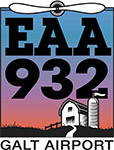The VFR sectional information block for any airport may indicate one or multiple radio communications frequencies, including control tower, CTAF, UNICOM and MULTICOM. Here is an explanation of what they are all used for.
UNICOM is a frequency pilots use to request airport information from a ground station which is monitored by FBO staff (not air traffic controllers). They can provide “airport advisories” which include such information as wind, weather, recommended runway, and other traffic in the area. Additionally UNICOM can be used to request FBO support services such as refueling, tie downs, hangars, transport, catering, etc. Although the majority of non-towered airports have this frequency on the VFR sectional chart, these days they are rarely monitored by anyone. They are generally more widely used at larger, controlled airports with FBOs that cater to business aviation. The UNICOM frequency, if there is one, will be indicated in italics on the VFR sectional chart.
At controlled airports there will be a tower frequency which is used by air traffic controllers and pilots to communicate with each other within the specified airspace for each airport. For class D airports this is generally within a four mile radius and for class C it is usually a five mile radius of the airport. On the VFR sectional chart the control tower frequency will be prefaced with the letters “CT.” Control towers at busy airports may operate 24/7, but many are part time and shut down overnight. If there is a star after the frequency it indicates that this tower operates part time. Pilots can determine the exact hours of operation in the chart supplement or, if you use ForeFlight the hours are shown in the frequencies section. When the tower is closed pilots must use the Common Traffic Advisory Frequency (CTAF) for traffic advisories.
A Common Traffic Advisory Frequency (CTAF) is a designated frequency used at, and in the vicinity of, non-towered airports by pilots to self-announce their position and intentions to other pilots in order to avoid traffic conflicts. The CTAF will also be used at towered airports when the tower is not operating. The letter “C” inside a solid circle immediately after any frequency means that is the frequency to use for CTAF self-announcing. When you see this symbol after the tower frequency it means that when the tower is closed the tower frequency should be used for CTAF communications. When this symbol appears after a UNICOM frequency it means the UNICOM frequency is used for traffic advisories as well as to request an airport advisory.
The MULTICOM frequency, 122.9 MHz, may be designated as the CTAF on the VFR sectional for some small, non-towered, airports where there is no UNICOM. This frequency should also be used for self-announcing procedures at any airport where there is no published frequency mentioned on the chart or in the chart supplement, including private/restricted airports.
Beth Rehm, CFI
JB Aviation Flight Training

